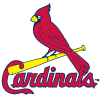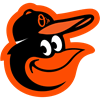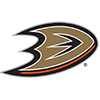With little over a month left to play, the remaining places to get an edge over your fellow owners are rapidly disappearing. Roster expansion in September certainly provides one such opportunity, with at least a few exciting prospects potentially getting the chance to earn a fair number of at-bats over the final few weeks.
Most of what happens when rosters expand is largely irrelevant to fantasy owners, though. Unplayable Orioles and Tigers losing at-bats to even more unplayable Orioles and Tigers won't effect too many competitive fantasy teams outside of those in the deepest of leagues. Neither will the influx of low-leverage relievers who will throw five or six innings over the course of the month.
One area where a small edge is possible (and potentially overlooked) is playing time. Not the playing-time split between players on a given team, which is important and widely discussed at every point in the year, but numbers of games to play for each team. At this point in the season, teams have surprisingly varying numbers of games left to play, with the Tigers playing 16 percent more games the rest of the way than the Angels and Blue Jays (36 for the former and 31 for the latter pair). That doesn't mean that every Tiger is suddenly interesting, but if there are equally mediocre Tigers and Angels or Blue Jays available on the waiver wire, there's little reason not to target the player who has the opportunity for 16 percent more at-bats.
The
With little over a month left to play, the remaining places to get an edge over your fellow owners are rapidly disappearing. Roster expansion in September certainly provides one such opportunity, with at least a few exciting prospects potentially getting the chance to earn a fair number of at-bats over the final few weeks.
Most of what happens when rosters expand is largely irrelevant to fantasy owners, though. Unplayable Orioles and Tigers losing at-bats to even more unplayable Orioles and Tigers won't effect too many competitive fantasy teams outside of those in the deepest of leagues. Neither will the influx of low-leverage relievers who will throw five or six innings over the course of the month.
One area where a small edge is possible (and potentially overlooked) is playing time. Not the playing-time split between players on a given team, which is important and widely discussed at every point in the year, but numbers of games to play for each team. At this point in the season, teams have surprisingly varying numbers of games left to play, with the Tigers playing 16 percent more games the rest of the way than the Angels and Blue Jays (36 for the former and 31 for the latter pair). That doesn't mean that every Tiger is suddenly interesting, but if there are equally mediocre Tigers and Angels or Blue Jays available on the waiver wire, there's little reason not to target the player who has the opportunity for 16 percent more at-bats.
The Athletics, Cardinals, Marlins, Padres, Phillies and Reds also have a fairly heavy slate (35 games) left, while the Astros, Braves, Dodgers, Rangers, Rays, Red Sox and Yankees each has just 32 games. Again, the edge is small, an extra handful of at-bats could make all the difference in a tight race.
A related area to potentially gain a small edge is by looking at a team's distribution of home versus road games remaining. That won't matter too much for teams with relatively neutral parks, but it certainly matters to some teams. Here is a list of teams with notable gaps between their remaining home and road contests:
| Team | Home Games Remaining | Road Games Remaining | Difference |
|---|---|---|---|
| Mets | 21 | 13 | 8 |
| Tigers | 22 | 14 | 8 |
| Diamondbacks | 20 | 13 | 7 |
| Rockies | 20 | 13 | 7 |
| Giants | 20 | 14 | 6 |
| Nationals | 20 | 14 | 6 |
| Twins | 14 | 20 | -6 |
| Yankees | 13 | 19 | -6 |
| Reds | 14 | 21 | -7 |
| Dodgers | 12 | 20 | -8 |
| Athletics | 13 | 22 | -9 |
There are a few things worth pointing out on this list. For one, there's the Tigers again. Not only do they have more games let than anyone else, they also have far more than their fair share of home games. Unfortunately, there likely are few Tigers worth picking up, and all the fringy ones (read: nearly everyone on the roster) are at risk of losing time in September, but it's still a factor worth considering. Additionally, Rockies hitters are always interesting, but how much more interesting would they be if they played more than 60 percent of their games at Coors Field? Finally, Yankees and Reds hitters typically get significant boosts from their home parks, but they won't get to enjoy those advantages too much over the stretch run.
None of these factors is huge, but they're all worth considering in a league where the margin between winning and coming in second could be as small as one run or one RBI.
RISERS
 Gleyber Torres, 2B/SS, Yankees: Torres has been excellent all season, as his .287/.352/.548 slash line would be good for anyone, let alone a 22-year-old middle infielder. He's been on a tear his last 14 games, though, hitting .352/.407/.889 with nine homers. His 32 homers this season are tied with Alex Bregman for the lead among shortstop-eligible players. The heights he's reaching in terms of power at his age are truly remarkable. With more than a month still to play, he already has the 12th-highest home-run total among hitters age 22 or younger this century. Among shortstops age 22 or younger in all eras, only Alex Rodriguez has hit more than Torres has managed this season. If Torres can hit 10 more bombs the rest of the way, he'll tie for the lead in both lists.
Gleyber Torres, 2B/SS, Yankees: Torres has been excellent all season, as his .287/.352/.548 slash line would be good for anyone, let alone a 22-year-old middle infielder. He's been on a tear his last 14 games, though, hitting .352/.407/.889 with nine homers. His 32 homers this season are tied with Alex Bregman for the lead among shortstop-eligible players. The heights he's reaching in terms of power at his age are truly remarkable. With more than a month still to play, he already has the 12th-highest home-run total among hitters age 22 or younger this century. Among shortstops age 22 or younger in all eras, only Alex Rodriguez has hit more than Torres has managed this season. If Torres can hit 10 more bombs the rest of the way, he'll tie for the lead in both lists.
 Ryan Yarbrough, SP/RP, Rays: The original "bulk guy" may now be too good for the role. Yarbrough has been used as a traditional starter in each of his last three appearances, allowing just a single earned run in 19.1 frames while recording a ridiculous 23:0 K:BB. Regardless of when he's entered the game, he's been excellent since the start of the second half, posting a 1.57 ERA, a 0.63 WHIP and a 46:2 K:BB in 46 innings. At least some of the improvement can seemingly be chalked up to a change in pitch mix, as the lefty has gone away from his 88.2 mph fastball in the second half, dropping its usage from 30.0 percent to 19.6 percent, with a corresponding increase in the usage of his cutter. Remaining a true starter the rest of the way may slightly hurt Yarbrough's fantasy prospects, as he'll now have to pitch five innings to get the win, something the Rays don't seem to care much about, but that should be more than offset by the 27-year-old's improved performances.
Ryan Yarbrough, SP/RP, Rays: The original "bulk guy" may now be too good for the role. Yarbrough has been used as a traditional starter in each of his last three appearances, allowing just a single earned run in 19.1 frames while recording a ridiculous 23:0 K:BB. Regardless of when he's entered the game, he's been excellent since the start of the second half, posting a 1.57 ERA, a 0.63 WHIP and a 46:2 K:BB in 46 innings. At least some of the improvement can seemingly be chalked up to a change in pitch mix, as the lefty has gone away from his 88.2 mph fastball in the second half, dropping its usage from 30.0 percent to 19.6 percent, with a corresponding increase in the usage of his cutter. Remaining a true starter the rest of the way may slightly hurt Yarbrough's fantasy prospects, as he'll now have to pitch five innings to get the win, something the Rays don't seem to care much about, but that should be more than offset by the 27-year-old's improved performances.
 Will Smith, C, Dodgers: The Dodgers' rise the last several seasons has been fueled in part by developing players previously cast aside like Justin Turner and Max Muncy. They've had more than their fair share of highly rated prospects as well, though, with 2016 first-round pick Smith becoming the latest member of that list. Through the first 31 games of his big-league career, he's hit an incredible .302/.378/.760, with his 12 homers already tying him for 16th among catchers. While slugging well above .700 is certainly unexpected, Smith was projected for at least above-average power as a minor-leaguer, and falling back to his expected slugging percentage (according to Statcast) of .523 would hardly be disappointing for a catcher. Smith should have little issue keeping the starting job down the stretch, though the presence of the even more highly rated Keibert Ruiz, holding his own as a 21-year-old at Triple-A, is something to at least keep in mind for owners in dynasty formats.
Will Smith, C, Dodgers: The Dodgers' rise the last several seasons has been fueled in part by developing players previously cast aside like Justin Turner and Max Muncy. They've had more than their fair share of highly rated prospects as well, though, with 2016 first-round pick Smith becoming the latest member of that list. Through the first 31 games of his big-league career, he's hit an incredible .302/.378/.760, with his 12 homers already tying him for 16th among catchers. While slugging well above .700 is certainly unexpected, Smith was projected for at least above-average power as a minor-leaguer, and falling back to his expected slugging percentage (according to Statcast) of .523 would hardly be disappointing for a catcher. Smith should have little issue keeping the starting job down the stretch, though the presence of the even more highly rated Keibert Ruiz, holding his own as a 21-year-old at Triple-A, is something to at least keep in mind for owners in dynasty formats.
 Alex Bregman, 3B/SS, Astros: Bregman's star has been steadily rising since he entered the league in 2016. His fantasy reputation has risen as well, leading to him finishing this draft season with an NFBC ADP of 13.7. In that context, his strong .259/.393/.516 slash line through the end of July was perhaps a slight disappointment. He's turned it on in August, though hitting .392/.484/.797 in 21 games with six homers and 11 multi-hit contests. Bregman has now set a career high with 32 homers, and his 159 wRC+ on the season is right in line with last year's 157 mark. He's also shown incredible plate discipline, walking 16.8 percent of the time while recording a 12.7 percent strikeout rate.
Alex Bregman, 3B/SS, Astros: Bregman's star has been steadily rising since he entered the league in 2016. His fantasy reputation has risen as well, leading to him finishing this draft season with an NFBC ADP of 13.7. In that context, his strong .259/.393/.516 slash line through the end of July was perhaps a slight disappointment. He's turned it on in August, though hitting .392/.484/.797 in 21 games with six homers and 11 multi-hit contests. Bregman has now set a career high with 32 homers, and his 159 wRC+ on the season is right in line with last year's 157 mark. He's also shown incredible plate discipline, walking 16.8 percent of the time while recording a 12.7 percent strikeout rate.
 Bryce Harper, OF, Phillies: Harper has been away on paternity leave the last few days, something the Phillies will hope won't disrupt what has been one of their big-money signing's best stretches of the season. The outfielder has managed an excellent .298/.385/.737 batting line with eight homers in his last 15 games and has a solid .960 OPS in his last 43 games after posting a disappointing .821 mark in his first 82 games for his new team. Extended over a full season, the 26-year-old's 139 wRC+ since the All-Star break would represent the third-highest mark of his career. He's unlikely to finish with the numbers that the Phillies hoped for when they gave him $330 million last offseason or that fantasy owners hoped for when they took him at an ADP of 17.5, but he'll still be a very valuable hitter down the stretch if he can keep up his recent level of performance.
Bryce Harper, OF, Phillies: Harper has been away on paternity leave the last few days, something the Phillies will hope won't disrupt what has been one of their big-money signing's best stretches of the season. The outfielder has managed an excellent .298/.385/.737 batting line with eight homers in his last 15 games and has a solid .960 OPS in his last 43 games after posting a disappointing .821 mark in his first 82 games for his new team. Extended over a full season, the 26-year-old's 139 wRC+ since the All-Star break would represent the third-highest mark of his career. He's unlikely to finish with the numbers that the Phillies hoped for when they gave him $330 million last offseason or that fantasy owners hoped for when they took him at an ADP of 17.5, but he'll still be a very valuable hitter down the stretch if he can keep up his recent level of performance.
 Andrew Heaney, SP, Angels: Heaney has always been an interesting option if healthy. His latest run of health has only lasted three starts, but they've been very good ones, as he's recorded a 2.41 ERA, a 0.64 WHIP and a 24:2 K:BB over 18.1 innings. He now owns a career-high 29.0 percent strikeout rate, though that's come in a fairly small sample of 12 starts as he hasn't been able to stay on the field on a consistent basis. The lefty's track record doesn't offer much reason to believe that he'll be able to do so down the stretch, but the Angels at least seem to be doing their best to keep him healthy, giving him six days to rest between his previous start and his next one Tuesday against Texas.
Andrew Heaney, SP, Angels: Heaney has always been an interesting option if healthy. His latest run of health has only lasted three starts, but they've been very good ones, as he's recorded a 2.41 ERA, a 0.64 WHIP and a 24:2 K:BB over 18.1 innings. He now owns a career-high 29.0 percent strikeout rate, though that's come in a fairly small sample of 12 starts as he hasn't been able to stay on the field on a consistent basis. The lefty's track record doesn't offer much reason to believe that he'll be able to do so down the stretch, but the Angels at least seem to be doing their best to keep him healthy, giving him six days to rest between his previous start and his next one Tuesday against Texas.
FALLERS
 Khris Davis, DH, Athletics: Davis has featured in this column on two occasions this season, but things simply haven't gotten better. He's been terrible in his last 13 games, grabbing just three hits while recording a .325 OPS. His ineptitude has extended far longer than that, though. He's managed just two multi-hit games in his last 44 contests, hitting .166/.244/.225 over that stretch. The Athletics have kept faith in him, continuing to trot him out in the designated hitter spot in nearly every game, but it's fair to wonder if they can afford to keep him in the lineup down the stretch in the middle of a hotly contested wild-card race. Davis' value for next season may be one of the more interesting fantasy topics of the offseason as owners decide how much stock they want to put into a bounceback season in his age-32 campaign, but there aren't many reasons to be excited about him over the final month of this year.
Khris Davis, DH, Athletics: Davis has featured in this column on two occasions this season, but things simply haven't gotten better. He's been terrible in his last 13 games, grabbing just three hits while recording a .325 OPS. His ineptitude has extended far longer than that, though. He's managed just two multi-hit games in his last 44 contests, hitting .166/.244/.225 over that stretch. The Athletics have kept faith in him, continuing to trot him out in the designated hitter spot in nearly every game, but it's fair to wonder if they can afford to keep him in the lineup down the stretch in the middle of a hotly contested wild-card race. Davis' value for next season may be one of the more interesting fantasy topics of the offseason as owners decide how much stock they want to put into a bounceback season in his age-32 campaign, but there aren't many reasons to be excited about him over the final month of this year.
 Matt Carpenter, 1B/3B, Cardinals: It's been a rough season for Carpenter. He was hitting a poor 216/.325/.381 when he went on the injured list with a lower-back strain in late June. He returned for just four games before heading back to the injured list with a bruised foot. Since returning in early August, things haven't really improved, as he'd hit .191/.328/.298 through his first 18 games of the month. A big day at the plate Sunday against the Rockies does perhaps indicate that he's trending in the right direction, though he has a lot to do over the final month and change of the season if he's to finish the year as even an average hitter, let alone reach the heights he's reached in the recent past. He's had issues across the board this season, as his 25.8 percent strikeout rate is the highest of his career, while his .157 ISO is his lowest since 2014.
Matt Carpenter, 1B/3B, Cardinals: It's been a rough season for Carpenter. He was hitting a poor 216/.325/.381 when he went on the injured list with a lower-back strain in late June. He returned for just four games before heading back to the injured list with a bruised foot. Since returning in early August, things haven't really improved, as he'd hit .191/.328/.298 through his first 18 games of the month. A big day at the plate Sunday against the Rockies does perhaps indicate that he's trending in the right direction, though he has a lot to do over the final month and change of the season if he's to finish the year as even an average hitter, let alone reach the heights he's reached in the recent past. He's had issues across the board this season, as his 25.8 percent strikeout rate is the highest of his career, while his .157 ISO is his lowest since 2014.
 Hunter Renfroe, OF, Padres: The late-July trade that sent Franmil Reyes to Cleveland was supposed to be a boost to Renfroe's value, as it decreased the competition for at-bats in the Padres' outfield. That much has indeed happened, as Renfroe has sat just three times in August, but he hasn't been able to take advantage of the opportunities. He's hit a poor .170/.260/.318 in his last 26 games, striking out at a 40.0 percent clip. Renfroe is very much a modern hitter, with plenty of strikeouts and plenty of homers. His 27.7 percent career strikeout rate hasn't been too much for his power to overcome, but that number now is 30.2 percent this season. Renfroe hits the ball hard, but he may not hit it hard enough to remain an effective hitter if that number continues to rise.
Hunter Renfroe, OF, Padres: The late-July trade that sent Franmil Reyes to Cleveland was supposed to be a boost to Renfroe's value, as it decreased the competition for at-bats in the Padres' outfield. That much has indeed happened, as Renfroe has sat just three times in August, but he hasn't been able to take advantage of the opportunities. He's hit a poor .170/.260/.318 in his last 26 games, striking out at a 40.0 percent clip. Renfroe is very much a modern hitter, with plenty of strikeouts and plenty of homers. His 27.7 percent career strikeout rate hasn't been too much for his power to overcome, but that number now is 30.2 percent this season. Renfroe hits the ball hard, but he may not hit it hard enough to remain an effective hitter if that number continues to rise.
 Jon Lester, SP, Cubs: The 35-year-old lefty had been aging quite gracefully, following last season's 3.32 ERA with a 3.63 ERA through the end of July this year. He's fallen apart since the calendar flipped to August, though, posting an 8.51 ERA and a 2.01 WHIP in five starts. He's walked 9.9 percent of batters this month, the first month in which he's recorded a walk rate worse than the league average since last July. A certain amount of skill loss should be expected for a pitcher of Lester's age, though it would be a surprise if he'd truly fallen off a cliff after a relatively gentle decline to this point of his career. Still, it would be unwise to expect too much down the stretch from a pitcher who's recorded a FIP of 4.00 or higher for three straight seasons.
Jon Lester, SP, Cubs: The 35-year-old lefty had been aging quite gracefully, following last season's 3.32 ERA with a 3.63 ERA through the end of July this year. He's fallen apart since the calendar flipped to August, though, posting an 8.51 ERA and a 2.01 WHIP in five starts. He's walked 9.9 percent of batters this month, the first month in which he's recorded a walk rate worse than the league average since last July. A certain amount of skill loss should be expected for a pitcher of Lester's age, though it would be a surprise if he'd truly fallen off a cliff after a relatively gentle decline to this point of his career. Still, it would be unwise to expect too much down the stretch from a pitcher who's recorded a FIP of 4.00 or higher for three straight seasons.



























